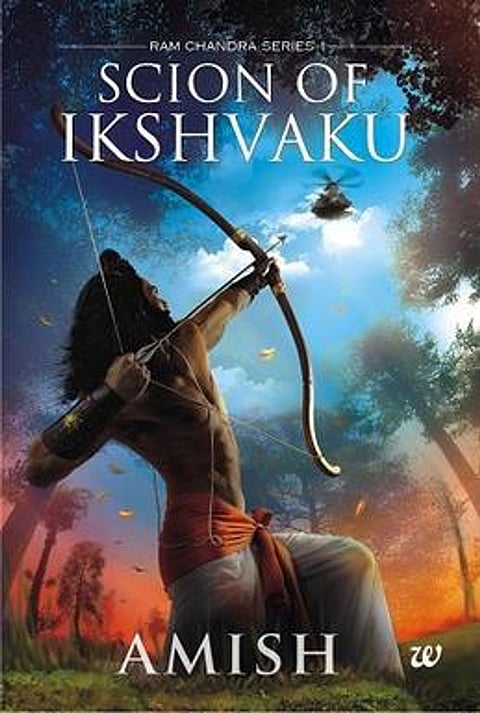
- Home
- न्यूजग्राम
- NewsGram USA
- India
- World
- Politics
- Entertainment
- Culture
- Lifestyle
- Economy
- Sports
- Sp. Coverage
- Misc.
- NewsGram Exclusive
- Jobs / Internships

Amish Tripathi is famous for taking elements from Hindu mythology and adding his own imagination to concoct exciting and thrilling reads. His earlier books on Shiva got rave reviews. And now he's back, and this time he is retelling us one of our favourite mythological stories. The story of Ramayana.
The first book of the Ram Chandra series by Amish Tripathi, The Scion of Ikshvaku, was released on 22 June 2015 after what seemed to be the most expensive promotional drive for a book, which even included YouTube trailers.
Akshay Kumar at the cover launch of 'The Scion of Ikshvaku.' Wikimedia Commons
How much did Tripathi succeed in retelling us the story of Ramayana?
Amish Tripathi knows how to mix mythology with his plots, but how accurate was his mythology this time around? For anyone who knows the Ramayana and expects 'The Scion of Ikshvaku' to be the same, must prepare themselves for a shock.
But for those who know how Amish Tripathi goes with his stories, the book will meet all their expectations, for Amish knows how to bend and create a story.
His literary style is nothing classic. Many people don't even like it, but one cannot help but admire how Amish always manages to create new stories from old, rusty ones. He has an exceptional ability to keep the essence of mythological tales while spinning wildly deviant plots around them.
The narration in 'The Scion of Ikshvaku' is very good, with crisp dialogues and suspense which was aptly built up paragraph through a paragraph.
Amish builds upon the epic Rama, in a very un-Ramayana like manner (He never used the word 'Ramayana' which is very clever of him). The differences with the epic tale are apparent right where he lists the major characters. Ram is just another human hero and the story is devoid of any magical elements.
The first and greatest difference between the Ramayana and The Scion of Ikshvaku is the depiction of Ram as an unloved prince. His father, King Dasaratha, considers Ram inauspicious and reason for all his misfortunes. The very foundation of the epic is laid differently in the story.
Many characters surprise us we move forward with the story. For example, Manthara instead of a poor handmaiden is shown as the wealthiest businesswoman of Ayodhya in Amish's world.
Another example is Sita, who Amish appointed as the prime minister of Mithila in his story. Ravana also only has one head in Tripathi's version, though with a horned helmet.
Amish Tripathi, the author who knows how to bend mythology to create amazing stories. Wikimedia Commons
The intrigue deepens as we read further into the story. Amish has played with this epic and has made it into a story which surprises us at every turn of event. It is nothing like we would think it would be.
Amish is unapologetic about all the changes he made in mythology and that is his USP.
The book is full of examples of Amish's imagination, but it is for the reader to find them and judge them. The author has packed his book with all the necessary drama-action-comedy masala, the combination which always gets guaranteed success.
Honestly, the book cannot claim any literary merit, but Amish's easy prose and page-turning style are designed to be enjoyable, not analyzable.
The book is simple yet written nicely. It can get you engrossed right away. Everything is explained well, it is graphic enough for a reader to play it as a movie in their head. This s one book which once picked up, you won't be able to leave until it is done.
